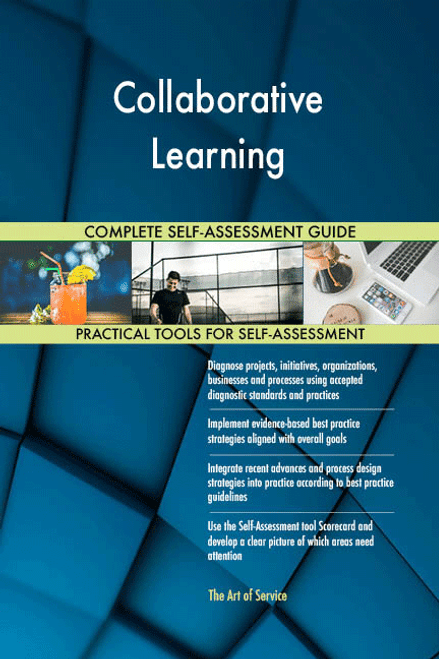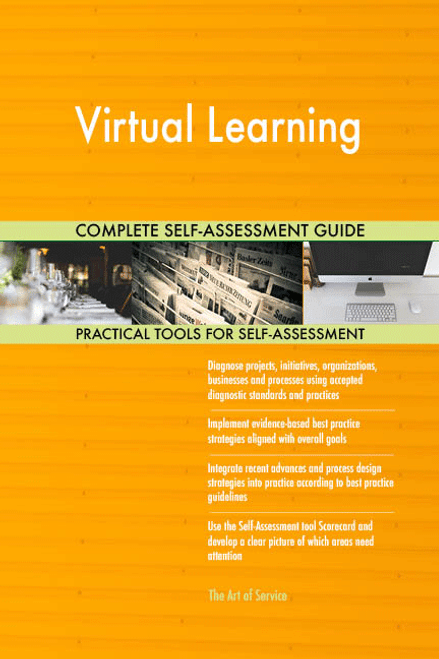- Devise and implement virtual methods of creating and maintaining your organization community.
- Lead Systems Engineering in planning, installation, and documentation of Network Topology and vmware and citrix virtual Desktop Infrastructure (VDI).
- Drive restaurant level economics and profitability through development of third party delivery and virtual restaurant sales and execution strategies.
- Apply virtual hosting and Server Technology in system architectures.
- Be accountable for using Configuration Management and software center to create, manage, update, and deploy software packages, patches, and updates to Windows 10 physical and virtual endpoints in a distributed environment.
- Support designers with converting CAD data to use with the Virtual Reality tool for prototyping concepts to evaluate design, user and service access.
- Manage IT inventory of laptops, monitors, pcs, virtual clients, printers, desk phones, mobile phones, tablets, tools, and cabling.
- Make sure that your organization defines revised or new system capabilities and modules to enable virtual department processes.
- Provide operational Project Management coordinating across virtual Business Teams to ensure the Process Analysis is performed in a holistic manner across multiple teams or Business Functions.
- Manage Azure subscriptions and resources; implement and manage storage; Deploy And Manage virtual machines; configure and manage virtual networks; and manage identities.
- Be certain that your team complies; customers receive personalized support that provides guidance during the planning stage and procurement, seamless delivery and deployment, and continued Technical Support through and beyond the life of physical and virtual systems.
- Direct all Operations And Maintenance of the system, analyze, diagnose, and resolve complex problems on physical and virtual infrastructure platforms.
- Lead expertise for design, configuration and deployment, of current hosting services to support virtual hosting technologies, Software Defined datacenter technologies, hyper converged datacenter hardware solutions, and software tools.
- Support local and cloud based physical and virtual Information Technology systems.
- Sustain relationships with client base through regular follow up and expected site visit or virtual session frequency.
- Create, administer, and maintain virtual and physical servers running Windows and Linux based operating systems.
- Be certain that your corporation develops an initial and virtual set of parameters based on Customer Data and Simulation Tools.
- Ensure you accomplish; coupled with Virtual Reality, animated by systems models and benefiting from Data Analytics, virtual prototyping becomes immersive and interactive.
- Manage work with engineering team to ensure proper design, implementation, and support of Virtual switching in VMware.
- Through virtual department training and face to face sessions, your hands on training philosophy partners you with established pros to learn the sales skills needed to close the deals in no time.
- Ensure you specify; lead virtual teams across initiatives in Innovation and collaborate with Executive Leadership across the various organization line of businesses.
- Recognize and drive opportunities to lead technical considerations in designing Data Lakes, Data Warehouses, IT Operations analytics based on MachinE Learning methodologies, and similar large scale Data products.
- Ensure you formulate; lead Program Management, Contingent Workforce.
Save time, empower your teams and effectively upgrade your processes with access to this practical Virtual CollaborativE Learning Toolkit and guide. Address common challenges with best-practice templates, step-by-step Work Plans and maturity diagnostics for any Virtual CollaborativE Learning related project.
Download the Toolkit and in Three Steps you will be guided from idea to implementation results.
The Toolkit contains the following practical and powerful enablers with new and updated Virtual CollaborativE Learning specific requirements:
STEP 1: Get your bearings
Start with...
- The latest quick edition of the Virtual CollaborativE Learning Self Assessment book in PDF containing 49 requirements to perform a quickscan, get an overview and share with stakeholders.
Organized in a Data Driven improvement cycle RDMAICS (Recognize, Define, Measure, Analyze, Improve, Control and Sustain), check the…
- Example pre-filled Self-Assessment Excel Dashboard to get familiar with results generation
Then find your goals...
STEP 2: Set concrete goals, tasks, dates and numbers you can track
Featuring 999 new and updated case-based questions, organized into seven core areas of Process Design, this Self-Assessment will help you identify areas in which Virtual CollaborativE Learning improvements can be made.
Examples; 10 of the 999 standard requirements:
- How likely is it that a customer would recommend your company to a friend or colleague?
- Who owns what data?
- What output to create?
- What are the minority interests and what amount of minority interests can be recognized?
- What disadvantage does this cause for the user?
- How much contingency will be available in the budget?
- Do you have any cost Virtual CollaborativE Learning limitation requirements?
- Will it solve real problems?
- Does Virtual CollaborativE Learning systematically track and analyze outcomes for accountability and quality improvement?
- Who, on the Executive Team or the board, has spoken to a customer recently?
Complete the self assessment, on your own or with a team in a workshop setting. Use the workbook together with the self assessment requirements spreadsheet:
- The workbook is the latest in-depth complete edition of the Virtual CollaborativE Learning book in PDF containing 994 requirements, which criteria correspond to the criteria in...
Your Virtual CollaborativE Learning self-assessment dashboard which gives you your dynamically prioritized projects-ready tool and shows your organization exactly what to do next:
- The Self-Assessment Excel Dashboard; with the Virtual CollaborativE Learning Self-Assessment and Scorecard you will develop a clear picture of which Virtual CollaborativE Learning areas need attention, which requirements you should focus on and who will be responsible for them:
- Shows your organization instant insight in areas for improvement: Auto generates reports, radar chart for maturity assessment, insights per process and participant and bespoke, ready to use, RACI Matrix
- Gives you a professional Dashboard to guide and perform a thorough Virtual CollaborativE Learning Self-Assessment
- Is secure: Ensures offline Data Protection of your Self-Assessment results
- Dynamically prioritized projects-ready RACI Matrix shows your organization exactly what to do next:
STEP 3: Implement, Track, follow up and revise strategy
The outcomes of STEP 2, the self assessment, are the inputs for STEP 3; Start and manage Virtual CollaborativE Learning projects with the 62 implementation resources:
- 62 step-by-step Virtual CollaborativE Learning Project Management Form Templates covering over 1500 Virtual CollaborativE Learning project requirements and success criteria:
Examples; 10 of the check box criteria:
- Cost Management Plan: Eac -estimate at completion, what is the total job expected to cost?
- Activity Cost Estimates: In which phase of the Acquisition Process cycle does source qualifications reside?
- Project Scope Statement: Will all Virtual CollaborativE Learning project issues be unconditionally tracked through the Issue Resolution process?
- Closing Process Group: Did the Virtual CollaborativE Learning Project Team have enough people to execute the Virtual CollaborativE Learning Project Plan?
- Source Selection Criteria: What are the guidelines regarding award without considerations?
- Scope Management Plan: Are Corrective Actions taken when actual results are substantially different from detailed Virtual CollaborativE Learning Project Plan (variances)?
- Initiating Process Group: During which stage of Risk planning are risks prioritized based on probability and impact?
- Cost Management Plan: Is your organization certified as a supplier, wholesaler, regular dealer, or manufacturer of corresponding products/supplies?
- Procurement Audit: Was a formal review of tenders received undertaken?
- Activity Cost Estimates: What procedures are put in place regarding bidding and cost comparisons, if any?
Step-by-step and complete Virtual CollaborativE Learning Project Management Forms and Templates including check box criteria and templates.
1.0 Initiating Process Group:
- 1.1 Virtual CollaborativE Learning project Charter
- 1.2 Stakeholder Register
- 1.3 Stakeholder Analysis Matrix
2.0 Planning Process Group:
- 2.1 Virtual CollaborativE Learning Project Management Plan
- 2.2 Scope Management Plan
- 2.3 Requirements Management Plan
- 2.4 Requirements Documentation
- 2.5 Requirements Traceability Matrix
- 2.6 Virtual CollaborativE Learning Project Scope Statement
- 2.7 Assumption and Constraint Log
- 2.8 Work Breakdown Structure
- 2.9 WBS Dictionary
- 2.10 Schedule Management Plan
- 2.11 Activity List
- 2.12 Activity Attributes
- 2.13 Milestone List
- 2.14 Network Diagram
- 2.15 Activity Resource Requirements
- 2.16 Resource Breakdown Structure
- 2.17 Activity Duration Estimates
- 2.18 Duration Estimating Worksheet
- 2.19 Virtual CollaborativE Learning project Schedule
- 2.20 Cost Management Plan
- 2.21 Activity Cost Estimates
- 2.22 Cost Estimating Worksheet
- 2.23 Cost Baseline
- 2.24 Quality Management Plan
- 2.25 Quality Metrics
- 2.26 Process Improvement Plan
- 2.27 Responsibility Assignment Matrix
- 2.28 Roles and Responsibilities
- 2.29 Human Resource Management Plan
- 2.30 Communications Management Plan
- 2.31 Risk Management Plan
- 2.32 Risk Register
- 2.33 Probability and Impact Assessment
- 2.34 Probability and Impact Matrix
- 2.35 Risk Data Sheet
- 2.36 Procurement Management Plan
- 2.37 Source Selection Criteria
- 2.38 Stakeholder Management Plan
- 2.39 Change Management Plan
3.0 Executing Process Group:
- 3.1 Team Member Status Report
- 3.2 Change Request
- 3.3 Change Log
- 3.4 Decision Log
- 3.5 Quality Audit
- 3.6 Team Directory
- 3.7 Team Operating Agreement
- 3.8 Team Performance Assessment
- 3.9 Team Member Performance Assessment
- 3.10 Issue Log
4.0 Monitoring and Controlling Process Group:
- 4.1 Virtual CollaborativE Learning project Performance Report
- 4.2 Variance Analysis
- 4.3 Earned Value Status
- 4.4 Risk Audit
- 4.5 Contractor Status Report
- 4.6 Formal Acceptance
5.0 Closing Process Group:
- 5.1 Procurement Audit
- 5.2 Contract Close-Out
- 5.3 Virtual CollaborativE Learning project or Phase Close-Out
- 5.4 Lessons Learned
Results
With this Three Step process you will have all the tools you need for any Virtual CollaborativE Learning project with this in-depth Virtual CollaborativE Learning Toolkit.
In using the Toolkit you will be better able to:
- Diagnose Virtual CollaborativE Learning projects, initiatives, organizations, businesses and processes using accepted diagnostic standards and practices
- Implement evidence-based Best Practice strategies aligned with overall goals
- Integrate recent advances in Virtual CollaborativE Learning and put Process Design strategies into practice according to Best Practice guidelines
Defining, designing, creating, and implementing a process to solve a business challenge or meet a business objective is the most valuable role; In EVERY company, organization and department.
Unless you are talking a one-time, single-use project within a business, there should be a process. Whether that process is managed and implemented by humans, AI, or a combination of the two, it needs to be designed by someone with a complex enough perspective to ask the right questions. Someone capable of asking the right questions and step back and say, 'What are we really trying to accomplish here? And is there a different way to look at it?'
This Toolkit empowers people to do just that - whether their title is entrepreneur, manager, consultant, (Vice-)President, CxO etc... - they are the people who rule the future. They are the person who asks the right questions to make Virtual CollaborativE Learning investments work better.
This Virtual CollaborativE Learning All-Inclusive Toolkit enables You to be that person.
Includes lifetime updates
Every self assessment comes with Lifetime Updates and Lifetime Free Updated Books. Lifetime Updates is an industry-first feature which allows you to receive verified self assessment updates, ensuring you always have the most accurate information at your fingertips.







